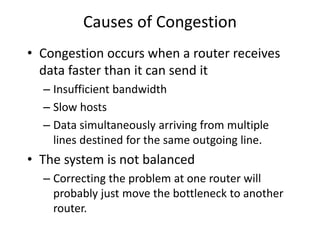(Disclosure, I may receive a small referral fee when you make a purchase through links on this post.)
Are you tired of your Chromecast buffering at the most crucial moments, like when your favorite show’s about to reveal a major plot twist or your team is about to score the winning goal? Fear not, my tech-savvy friends, for we have the answers to all your streaming woes! By making a few simple router tweaks, you can optimize your Chromecast experience and say goodbye to endless loading screens and glitchy streams. So grab your router and get ready to unleash the full potential of your favorite little streaming device!
Router Placement and Signal Strength
So, you’ve got your fancy new router all set up and ready to go, but you’re finding that the Wi-Fi signal just isn’t reaching as far as you’d like. Fear not, dear internet surfer, for I am here to guide you on your quest for optimal !
First things first, make sure your router is in a central location in your home. You don’t want it hiding in a corner like a sad, forgotten toy. Give it a place of honor where it can broadcast its signal far and wide. Think of it as the king of the castle, ruling over all your devices with a benevolent (and hopefully strong) signal.
Next, make sure your router is elevated off the ground. Don’t let it languish down low like a lowly peasant. Elevate it to new heights so that its signal can reach the tallest towers of your home. Mount it on a shelf or even hang it from the ceiling if you’re feeling particularly adventurous.
Finally, make sure there are no obstructions blocking your router’s signal. Don’t let walls or furniture stand in the way of your precious Wi-Fi waves. Clear a path for your signal to travel freely, unencumbered by the trappings of modern life. Let it soar like a majestic eagle, bringing internet joy to all who bask in its glow.

Choosing the Right Frequency Band
So you’re in the market for a new frequency band? Excellent choice! But with so many options out there, it can be overwhelming trying to decide which one is right for you. Well, fear not my friend, because I’m here to help you navigate through the world of frequencies like a pro!
First things first, let’s talk about high frequency bands. These bad boys are perfect for when you need quick and reliable communication. Think of them like the superhero of the frequency world – always there when you need them, ready to save the day!
On the other end of the spectrum, we have low frequency bands. These are more laid back, taking their time to deliver messages. If you’re in no rush and just want to chill, low frequency bands are the way to go. They’re like the zen masters of the frequency universe.
And then there’s mid-range frequency bands. They’re like the Goldilocks of frequencies – not too fast, not too slow, but just right. If you’re looking for that perfect balance between speed and reliability, mid-range frequencies are your best bet. They’re the sweet spot that you’ve been searching for!

Configuring Quality of Service (QoS)
When it comes to , it’s like being the traffic cop of your network. You get to decide who gets to zoom by in the fast lane and who’s stuck in the bumper-to-bumper traffic.
So, how do you become the ultimate QoS guru? Well, it’s all about setting priorities and managing bandwidth like a boss. First things first, you need to identify which applications or services are the VIPs of your network. Maybe it’s your video conferencing software that needs a clear connection or your online gaming addiction that can’t handle any lag.
Once you’ve identified your top contenders, it’s time to assign them specific priorities. Think of it like assigning seating at a fancy dinner party – the more important the guest, the closer they get to the host. You can use tools like DiffServ (Differentiated Services) to categorize traffic and make sure your top dogs get the royal treatment.
But wait, there’s more! You can also set bandwidth limits for certain applications to avoid any bandwidth hogs from taking over the whole show. It’s like putting a speed limit on that crazy driver who’s always zooming past everyone on the highway. With a little bit of tinkering and a lot of creative thinking, you’ll have your QoS settings perfectly tailored to keep your network running smoothly and efficiently.

Updating Firmware for Better Performance
So you want to take your device to the next level, huh? Well, good news – updating your firmware can do just that! No need for magic potions or fairy dust, just a simple software update. Here are a few reasons why updating your firmware can lead to better performance:
- Bug Fixes: Ever feel like your device has a mind of its own? Updating your firmware can squash those pesky bugs that seem to pop up at the most inconvenient times. Say goodbye to random crashes and freezes!
- Security Improvements: Keep those cyber baddies at bay with the latest security patches. No need to worry about hackers sneaking into your device – it’s like having a digital moat around your castle!
- Enhanced Features: Who doesn’t love a little upgrade? Firmware updates often come with new features and improvements that can make your user experience smoother and more enjoyable. It’s like getting a surprise gift every time you update!
So, don’t be afraid to take the plunge and update that firmware. It’s like giving your device a mini makeover – who knows, it might just thank you by performing better than ever before!

Managing Network Congestion and Bandwidth
Dealing with network congestion and limited bandwidth can feel like trying to fit a T-Rex through a keyhole – it’s a tight squeeze! But fear not, brave network warriors, for there are ways to navigate through this digital traffic jam without losing your sanity. Here are a few tips to help you ease the bottleneck:
- Quality of Service (QoS) settings: Think of these settings as the gatekeepers of your network – they decide who gets priority access to the bandwidth. By configuring QoS settings, you can ensure that mission-critical applications like video conferencing or online gaming get the bandwidth they need, while less important tasks take a back seat.
- Bandwidth throttling: Sometimes, you have to be the bad cop and limit the amount of bandwidth certain applications can use. This might mean imposing strict data caps on Netflix binge-watchers or limiting the number of downloads happening simultaneously. It’s tough love, but someone’s got to do it!
Invest in network monitoring tools: It’s hard to fix a problem when you can’t see it. By using network monitoring tools, you can keep an eye on your network traffic in real-time and pinpoint where congestion is happening. Armed with this information, you can make informed decisions on how to unclog the digital pipes.
Enhancing Security for a Seamless Streaming Experience
Are you tired of your streaming experience being interrupted by pesky hackers and cyber attacks? Well, fear not! We have some top-notch security measures in place to ensure that your binge-watching sessions go uninterrupted.
Our team of cyber experts have implemented **cutting-edge encryption** to protect your precious data from falling into the wrong hands. Say goodbye to those annoying buffering issues caused by unauthorized access - we’ve got your back!
With **multi-factor authentication** in place, only you have the power to access your account and enjoy your favorite shows and movies. No more worrying about someone else hijacking your account and watching all those embarrassing reality TV shows on your behalf!
So sit back, relax, and enjoy a seamless streaming experience knowing that we’ve got your security covered. Trust us, your binge-watching sessions have never been safer!
FAQs
Why is my Chromecast always buffering?
Well, my friend, it could be because your router is as slow as a snail carrying a backpack full of rocks. Try tweaking your router settings to prioritize network traffic to your Chromecast for a smoother streaming experience. Let that video flow like a majestic river, not a clogged drain.
Can I really boost my Wi-Fi signal for better Chromecast performance?
Absolutely! Think of your Wi-Fi signal like a superhero cape – it’s there to save the day. Position your router in a central location, away from obstructions, and consider upgrading to a high-gain antenna for some extra signal-boosting power. Your Chromecast will thank you with smooth, uninterrupted streaming.
My Chromecast keeps losing connection. Is there a way to fix this?
Ah, the dreaded Wi-Fi dropout. Fear not, for there is a solution! Dive into your router settings and set a fixed channel for your Wi-Fi network. This will help prevent interference from neighboring networks and keep your Chromecast connected like a loyal sidekick.
How can I reduce lag when casting from my device to Chromecast?
Lag? Ain’t nobody got time for that! Check if your router supports Quality of Service (QoS) settings and prioritize your Chromecast for that VIP treatment. With QoS on your side, you’ll be casting like a pro without any pesky delays.
Upgrade Your Streaming Game!
Congratulations on taking the first step to optimizing your Chromecast experience with these router tweaks! Now sit back, relax, and enjoy smooth, uninterrupted streaming on your favorite devices. With a little bit of technical know-how and a sprinkle of router magic, you can truly take your entertainment to the next level. So go forth, tech-savvy wizard, and conquer the streaming world!



